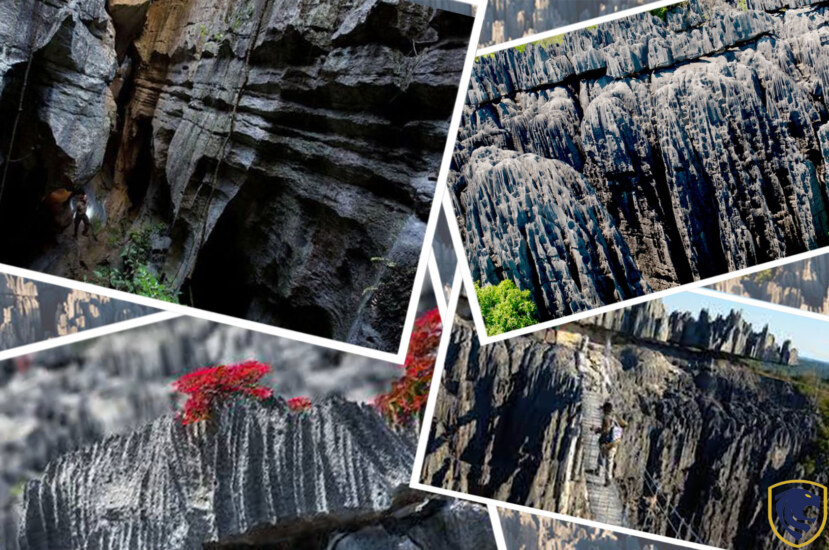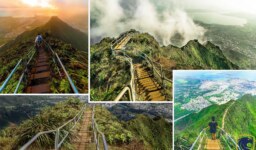Stone Forest in Madagascar is indeed an astounding fabrication of mother nature. It is an accumulation of huge rocks. The ceaseless view of the mysterious rock formation simulates an infinitive view of a town full of skyscrapers. And also it reminds us of a rock fortress of an ancient city. This peculiar formation holds razor-sharp edges on the top of the rocks.The “Tsingy” is the local term for this region. Furthermore, Tsingy refers to an area where barefoot travel is prohibited. As mentioned in that name this place was out of bounds to people for many years.
At a glance, the fact that this should be a desert of biodiversity enters our mind. But the stone forest of Madagascar is an animal paradise. Today, we’ll delve deeper into Madagascar’s Stone Forest’s secretive realm. What location is it in? The second-largest nation in the world, Madagascar is made up of islands in the Indian Ocean.
Where is it located?
Madagascar is the world’s second-largest country that encompasses islands in the Indian ocean. These islands experience sub-equatorial climate occurs due to trade winds. Tsingy de Bemaraha is located on the west coast of Madagascar. And it includes a national park and strict nature reserve.
Stone Forest in Madagascar has distinguished as a UNESCO world heritage site since 1990. Moreover, it became a UNESCO National Cultural Heritage Site in 1991. Hikers are ought to take a difficult hike in order to reach this exceptional rock formation. Firstly hikers should take an easy walk on a sand path. Thereafter, a difficult path with huge rock formations breezes in. You have to take a path through narrow caves if you decide to take the hike. It will take approximately 1 1/2 hours to reach the observation area. There you can witness the spectacular vista of this extraordinary rock forest.

Stone forest in Madagascar
There is a place named “Little Tsingy”. Little Tsingy consists of relevantly short rock formations. When you travel further you can see rock columns that reach over 100 meters high.
Biodiversity of the area
Stone Forest in Madagascar encompasses a rich variety of wildlife. Some trees are growing between the rocks. These trees are well adapted to the arid environment in the Tsingy area. These succulents stretch their roots underground running through the gaps between rocks. Therefore, these trees consist of thick roots that can grow longer. Furthermore, this is the home of many endangered species. It is a famous Aye-eye paradise. Aye-eyes are mammals that have hairy skin. They are the most primitive type of lemurs. In addition, they have been on earth for 50 million years. The scientific name of Aye-eyes is Daubentonia madagascariensis. They are omnivore creature that has approximately 20 years of a life span. Furthermore, Aye-eyes has a 14-17 inches long body and a 22-24 inches long tail. Aye-eyes are mostly active from dusk to dawn.

Biodiversity in the area, Lemurs
Aye-eyes were once considered extinct. Although were rediscovered in 1957, there is only a small population spread across Madagascar. They are in danger of extinction because to habitat loss. The forest consumption in Madagascar directly causes this tragedy. There are Aye-eyes in Stone forest in Madagascar. The beans that grow in the forest are the main food of Aye-eyes.
Moreover, Stone Forest is a home for endangered lemurs. Lemurs are a species of ape called prosimians. Monkeys, apes, and humans are examples of other primates. Lemurs are only found in Madagascar. There they developed independently. Lemurs, who differ from monkeys in having a moist nose, rely more on their sense of smell. Not only that, except for South America Stone forest in Madagascar is the only place where Iguanas are found.
How was the Stone forest in Madagascar was formed?

Stone forest in Madagascar




